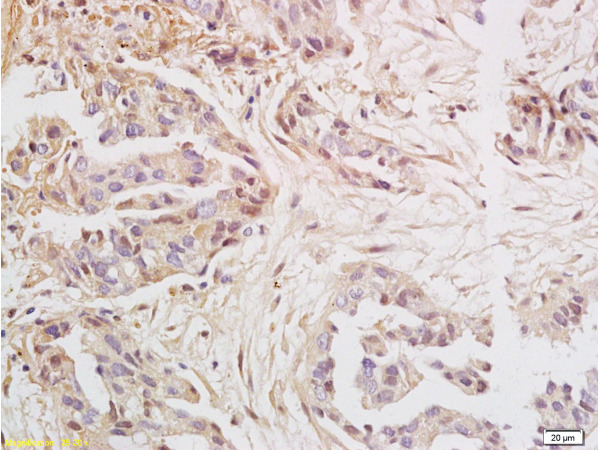HMGA2 antibody [GT763]
GTX629478
ApplicationsImmunoFluorescence, ImmunoPrecipitation, Western Blot, ImmunoCytoChemistry, ImmunoHistoChemistry, ImmunoHistoChemistry Paraffin
Product group Antibodies
ReactivityHuman, Mouse, Rat
TargetHMGA2
Overview
- SupplierGeneTex
- Product NameHMGA2 antibody [GT763]
- Delivery Days Customer9
- Application Supplier NoteWB: 1:500-1:3000. ICC/IF: 1:100-1:1000. IHC-P: 1:100-1:1000. IP: 1:100-1:500. *Optimal dilutions/concentrations should be determined by the researcher.Not tested in other applications.
- ApplicationsImmunoFluorescence, ImmunoPrecipitation, Western Blot, ImmunoCytoChemistry, ImmunoHistoChemistry, ImmunoHistoChemistry Paraffin
- CertificationResearch Use Only
- ClonalityMonoclonal
- Clone IDGT763
- Concentration1 mg/ml
- ConjugateUnconjugated
- Gene ID8091
- Target nameHMGA2
- Target descriptionhigh mobility group AT-hook 2
- Target synonymsBABL, HMGI-C, HMGIC, LIPO, SRS5, STQTL9, high mobility group protein HMGI-C, HMGA2/KRT121P fusion
- HostMouse
- IsotypeIgG1
- Protein IDP52926
- Protein NameHigh mobility group protein HMGI-C
- Scientific DescriptionThis gene encodes a protein that belongs to the non-histone chromosomal high mobility group (HMG) protein family. HMG proteins function as architectural factors and are essential components of the enhancesome. This protein contains structural DNA-binding domains and may act as a transcriptional regulating factor. Identification of the deletion, amplification, and rearrangement of this gene that are associated with myxoid liposarcoma suggests a role in adipogenesis and mesenchymal differentiation. A gene knock out study of the mouse counterpart demonstrated that this gene is involved in diet-induced obesity. Alternate transcriptional splice variants, encoding different isoforms, have been characterized. [provided by RefSeq]
- ReactivityHuman, Mouse, Rat
- Storage Instruction-20°C or -80°C,2°C to 8°C
- UNSPSC12352203
References
- Li J, Dang SM, Schurmann P, et al. Organoid modeling reveals the tumorigenic potential of the alveolar progenitor cell state. Res Sq. 2023,:pii: rs.3.rs-2663901. doi: 10.21203/rs.3.rs-2663901/v1.Read this paper
- Leistico JR, Saini P, Futtner CR, et al. Epigenomic tensor predicts disease subtypes and reveals constrained tumor evolution. Cell Rep. 2021,34(13):108927. doi: 10.1016/j.celrep.2021.108927Read this paper
- Fernandez-Nieto D, Hammerle J, Fernandez-Escribano M, et al. Skin manifestations of the BNT162b2 mRNA COVID-19 vaccine in healthcare workers. 'COVID-arm': a clinical and histological characterization. J Eur Acad Dermatol Venereol. 2021,35(7):e425-e427. doi: 10.1111/jdv.17250Read this paper
- Panneerdoss S, Eedunuri VK, Yadav P, et al. Cross-talk among writers, readers, and erasers of m(6)A regulates cancer growth and progression. Sci Adv. 2018,4(10):eaar8263. doi: 10.1126/sciadv.aar8263Read this paper






